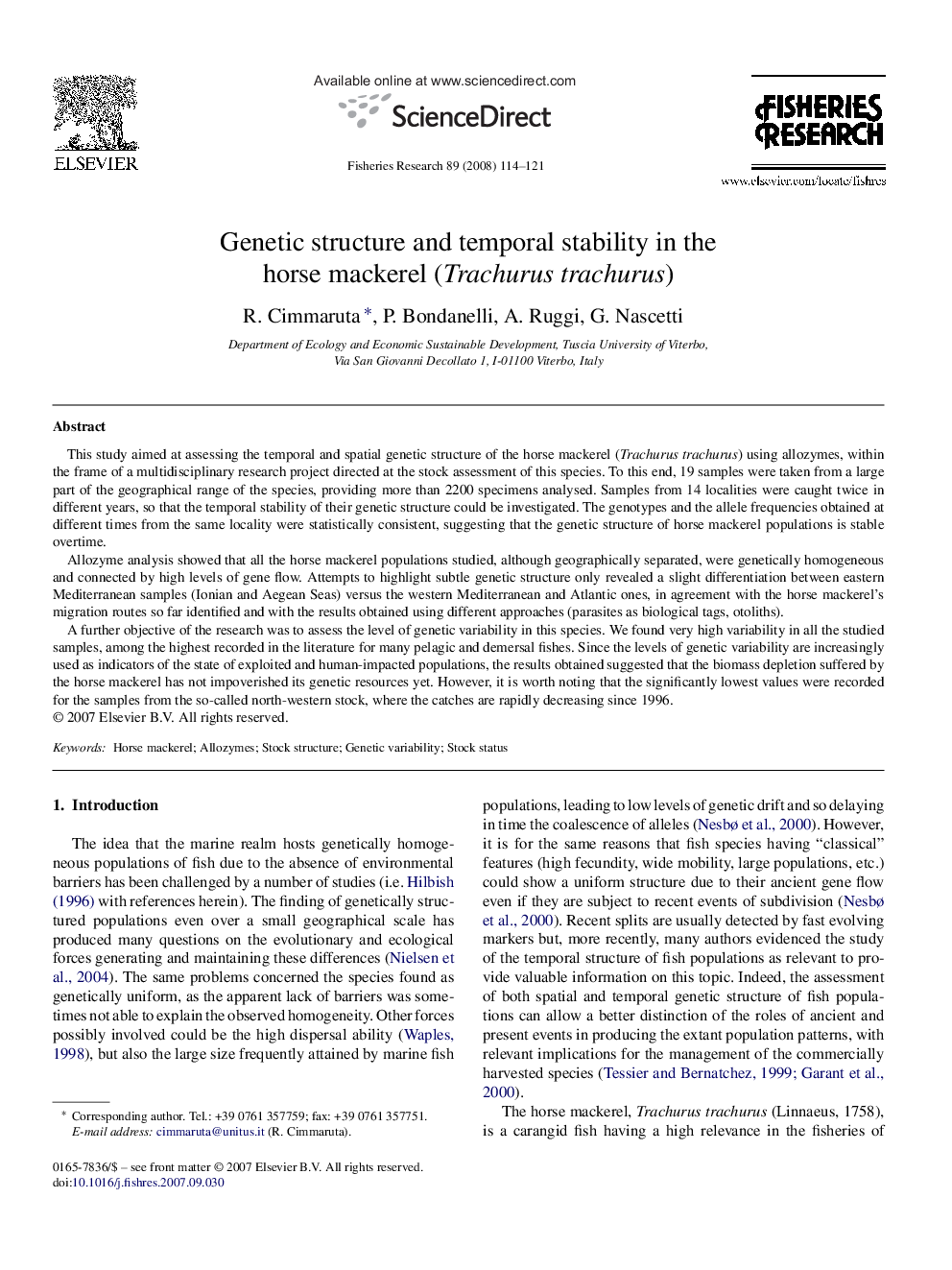| Article ID | Journal | Published Year | Pages | File Type |
|---|---|---|---|---|
| 4544608 | Fisheries Research | 2008 | 8 Pages |
This study aimed at assessing the temporal and spatial genetic structure of the horse mackerel (Trachurus trachurus) using allozymes, within the frame of a multidisciplinary research project directed at the stock assessment of this species. To this end, 19 samples were taken from a large part of the geographical range of the species, providing more than 2200 specimens analysed. Samples from 14 localities were caught twice in different years, so that the temporal stability of their genetic structure could be investigated. The genotypes and the allele frequencies obtained at different times from the same locality were statistically consistent, suggesting that the genetic structure of horse mackerel populations is stable overtime.Allozyme analysis showed that all the horse mackerel populations studied, although geographically separated, were genetically homogeneous and connected by high levels of gene flow. Attempts to highlight subtle genetic structure only revealed a slight differentiation between eastern Mediterranean samples (Ionian and Aegean Seas) versus the western Mediterranean and Atlantic ones, in agreement with the horse mackerel's migration routes so far identified and with the results obtained using different approaches (parasites as biological tags, otoliths).A further objective of the research was to assess the level of genetic variability in this species. We found very high variability in all the studied samples, among the highest recorded in the literature for many pelagic and demersal fishes. Since the levels of genetic variability are increasingly used as indicators of the state of exploited and human-impacted populations, the results obtained suggested that the biomass depletion suffered by the horse mackerel has not impoverished its genetic resources yet. However, it is worth noting that the significantly lowest values were recorded for the samples from the so-called north-western stock, where the catches are rapidly decreasing since 1996.
